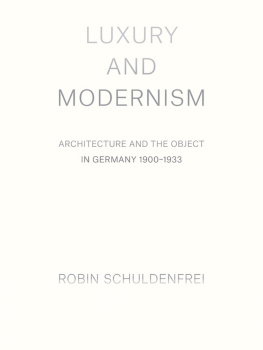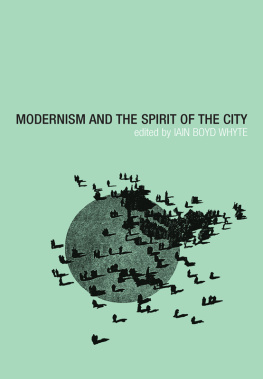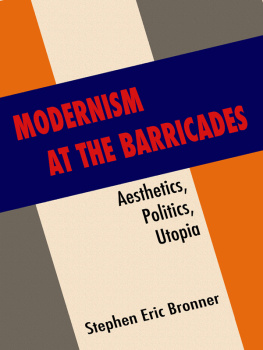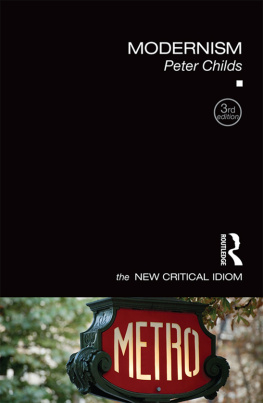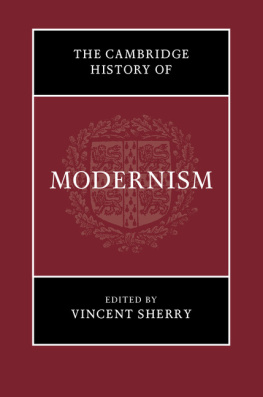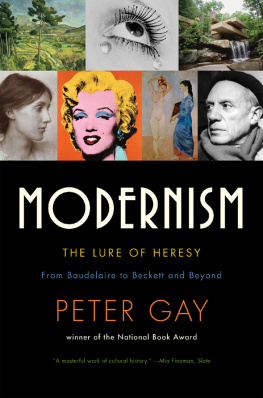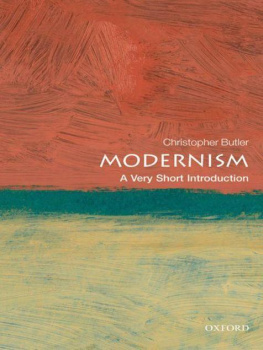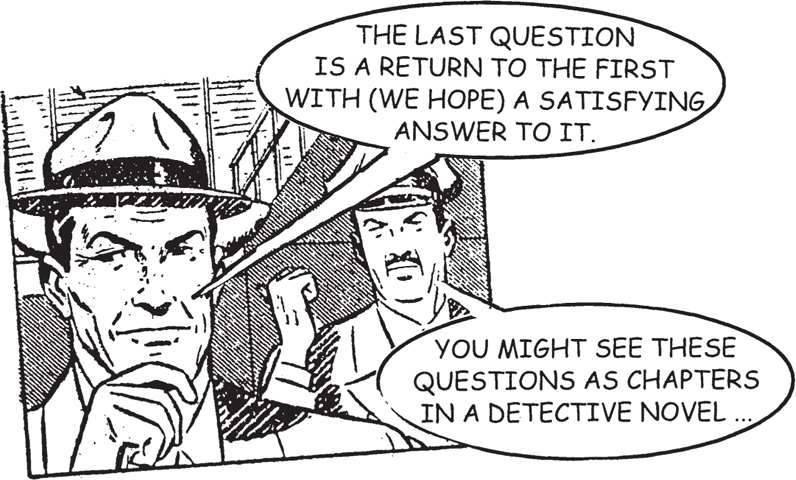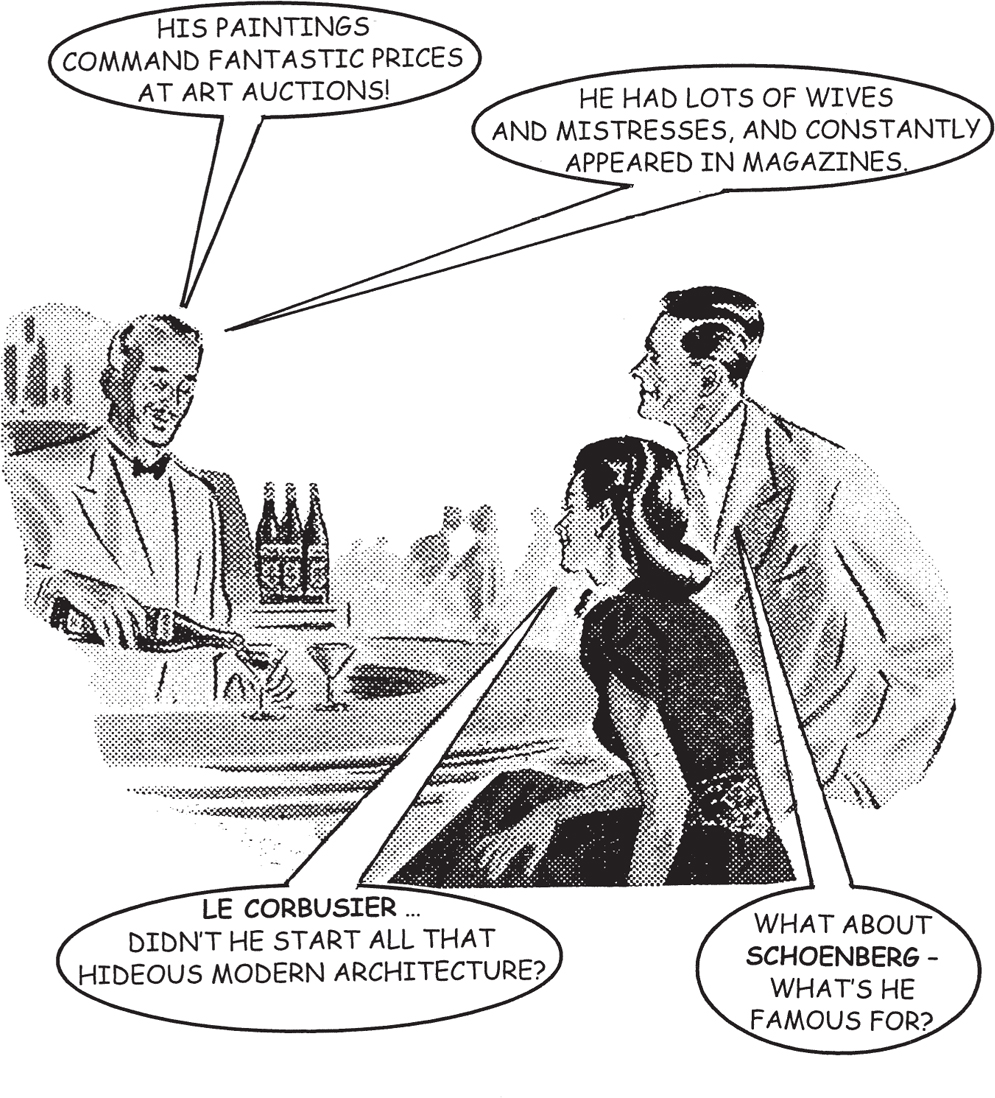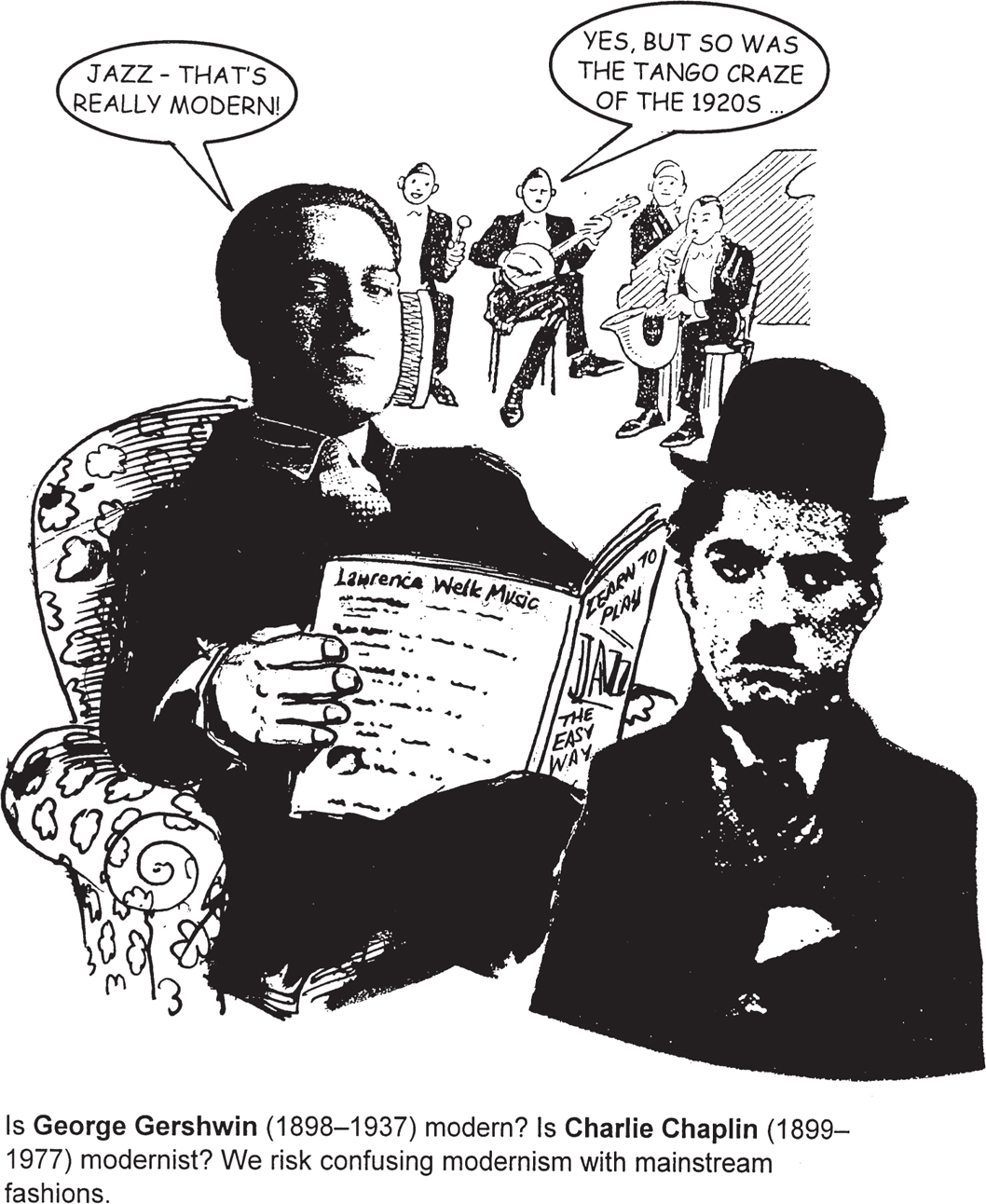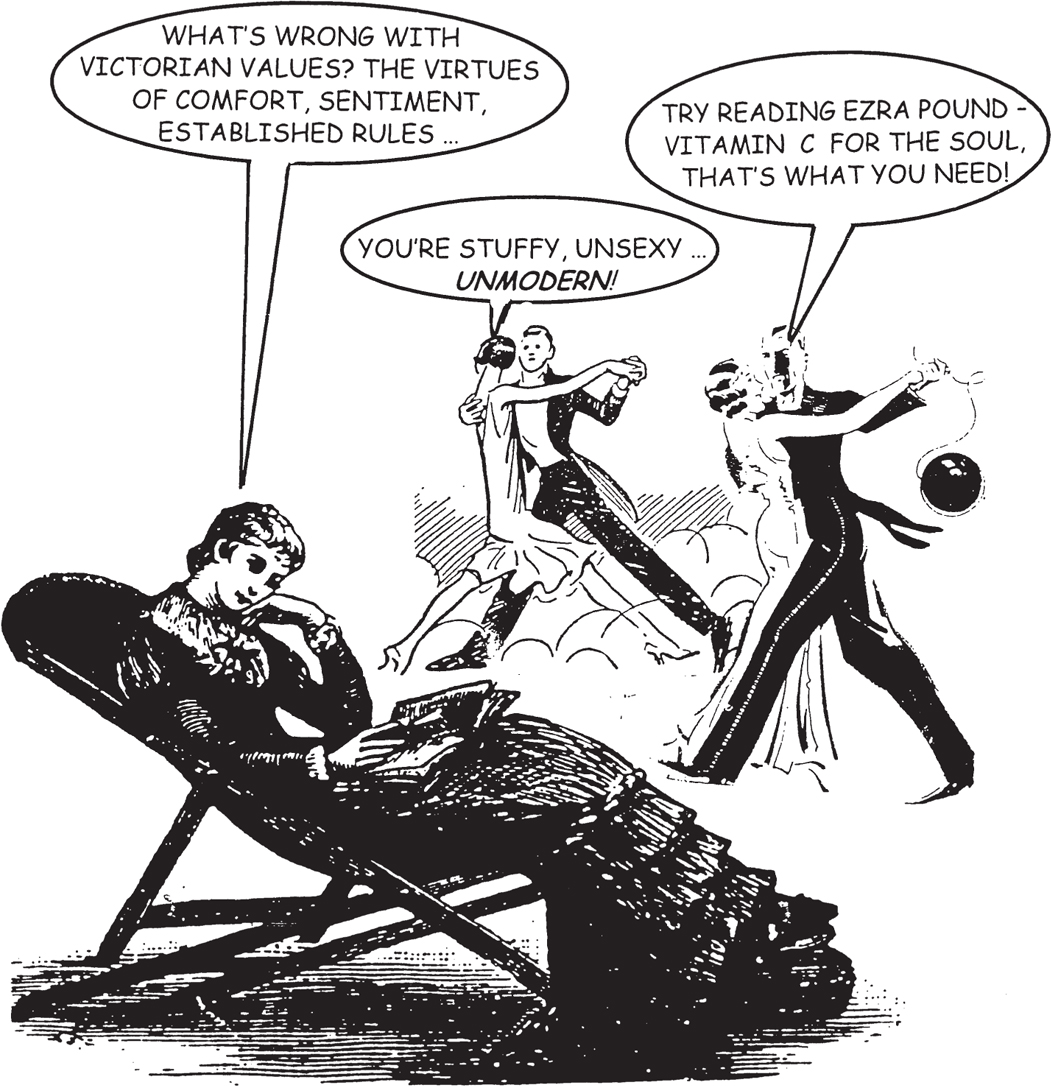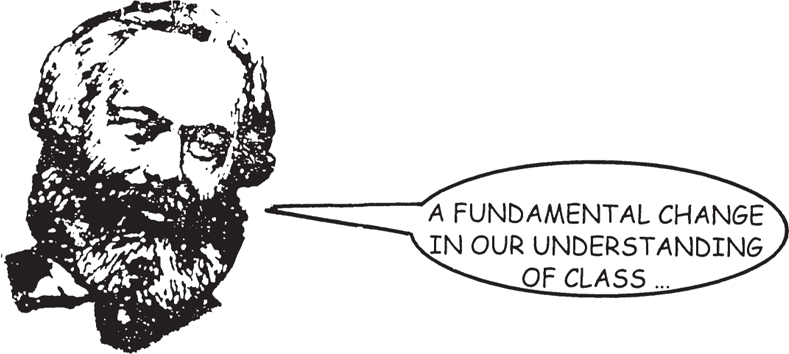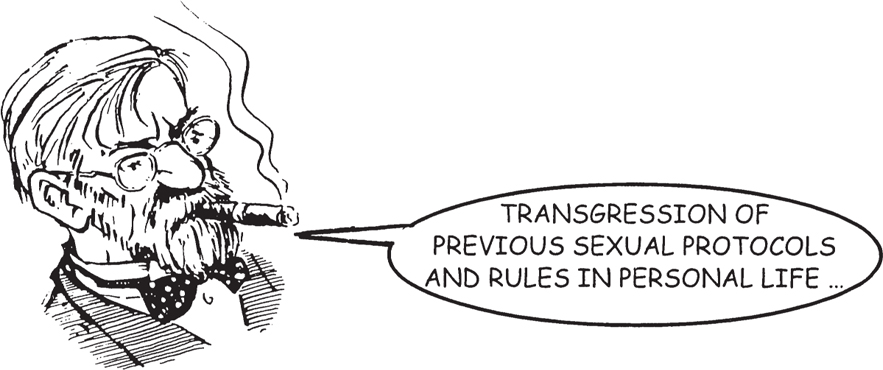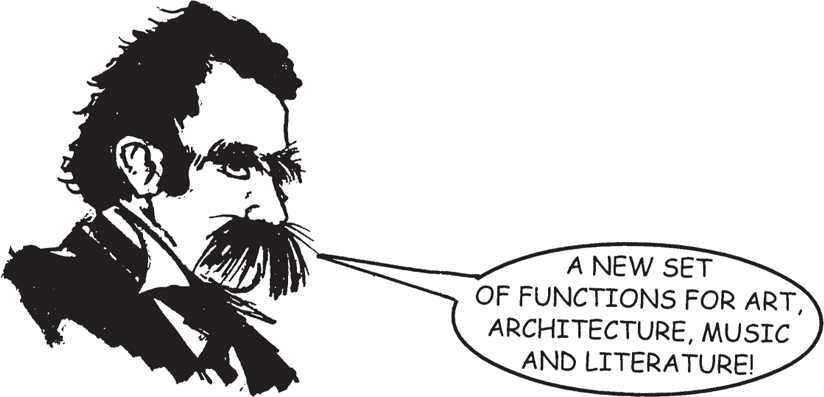Published by Icon Books Ltd, Omnibus Business Centre, 3941 North Road, London N7 9DP
Email:
www.introducingbooks.com
ISBN: 978-184831-116-9
Text copyright 2012 Icon Books Ltd
Illustrations copyright 2012 Icon Books Ltd
The author and illustrator has asserted their moral rights
Originating editor: Richard Appignanesi
No part of this book may be reproduced in any form, or by any means, without prior permission in writing from the publisher.
Contents
Realizing Modernism
This book will try to answer 15 basic questions on modernism, and is specifically concerned with modernism in the arts.
1. What is modernism?
2. When does modernism begin?
3. What is the difference between modernism and modernity?
4. Is modernism just a reaction to modernity?
5. How do we recognize a modernist work?
6. Is there a modernist theory in relation to practice?
7. What is the relation of modernism to primitivism?
8. What is the relation of modernism to psychoanalysis?
9. What is the role of the city in modernism?
10. Why are modernists so often exiles?
11. What is the role of lites and avant-gardes in modernism?
12. What politics did modernists espouse?
13. How does modernism relate to mass culture?
14. What is the relation of cinema to modernism?
15. Has modernism ended?
THE LAST QUESTION IS A RETURN TO THE FIRST WITH (WE HOPE) A SATISFYING ANSWER TO IT. YOU MIGHT SEE THESE QUESTIONS AS CHAPTERS IN A DETECTIVE NOVEL ...
What is Modernism?
What is the first feature of modernism that is generally acknowledged? Most of us will agree that a modernist work is perceived as difficult, and that its difficulty is associated with unfamiliarity and difference. D.H. Lawrence (18851930), who might himself be classified a modernist writer, expressed this feeling of the pleasure and pain of difficulty.
to read a really new novel will always hurt, to some extent. There will always be resistance. The same with new pictures, new music. You may judge of their reality by the fact that they do arouse a certain resistance, and compel, at length, a certain acquiescence.
All works that can be accommodated under the umbrella of modernism or, as well see, schools of modernisms share a relationship to the modern world which is peculiarly new and exceptional to any other previous cultural and historical condition.
Novelty and difficulty form a special historical alliance. Thats one feature. Another is the reply that most people will give to the question: What is modernism? More than likely, they will identify it by naming its icons.
PABLO PICASSO (18811973), SALVADOR DAL (190489), T.S. ELIOT (18881965), ARNOLD SCHOENBERG (18741951), LE CORBUSIER (18871965), KASIMIR MALEVICH (18781935).
... EZRA POUND (18851972), FRANK LLOYD WRIGHT (18671959), MARCEL PROUST (18711992), VIRGINIA WOOLF (18821941), IGOR STRAVINSKY (18821971), RAINER MARIA RILKE (18751926) ...
MAN RAY (18901976), THOMAS MANN (18751955), LEON TROTSKY (18791940), ALBAN BERG (18851935) ......... SHALL WE GO ON?
Interesting reasons can be found positive and negative why these names occur. Lets consider just three from this list.
Media High Profile
What makes an icon? Picasso is likely to be remembered not just because he was a great artist. Media notoriety is crucial.
HIS PAINTINGS COMMAND FANTASTIC PRICES AT ART AUCTIONS!
HE HAD LOTS OF WIVES AND MISTRESSES, AND CONSTANTLY APPEARED IN MAGAZINES.
LE CORBUSIER ... DIDNT HE START ALL THAT HIDEOUS MODERN ARCHITECTURE?
WHAT ABOUT SCHOENBERG WHATS HE FAMOUS FOR?
Arnold Schoenberg might not figure so high in the media stakes. His brand of (classical?) modernist music is, of all the modernisms, the most litist and remote from the feelings of contemporary society. What does the a-tonal style or the serial system of composition mean to us? Most of us are happier with less cerebral forms of music that we can still identify as modern.
JAZZ THATS REALLY MODERN!
YES, BUT SO WAS THE TANGO CRAZE OF THE 1920S ...
Keeping up with Fashion
Fashion has the benefit of making us reflect on what modernism isnt, what it was reacting against, what it intended to replace.
WHATS WRONG WITH VICTORIAN VALUES? THE VIRTUES OF COMFORT, SENTIMENT, ESTABLISHED RULES ...
YOURE STUFFY, UNSEXY ... UNMODERN!
TRY READING EZRA POUND VITAMIN C FOR THE SOUL, THATS WHAT YOU NEED!
And this might lead us to think of trends or movements characteristic of modernism for instance, Cubism, Dadaism or Surrealism instead of simply naming personalities.
Such isms indeed modernism itself provide clues to the spirit of the age, the Zeitgeist as its often called. Modernism expresses the new energies sweeping through from the late 19th century onwards the revolutionary potentials opened up by Marx, Freud, Nietzsche and others.
A FUNDAMENTAL CHANGE IN OUR UNDERSTANDING OF CLASS ...
TRANSGRESSION OF PREVIOUS SEXUAL PROTOCOLS AND RULES IN PERSONAL LIFE ...
A NEW SET OF FUNCTIONS FOR ART, ARCHITECTURE, MUSIC AND LITERATURE!
So, modernism concerns not only novelty and difficulty, but also a change in social dynamics. Nevertheless, we are still in the realm of generalities. How do we identify the specifics of modernism? Perhaps the question of modernisms timeliness is a good way to begin.
Chronologies and dates are often seen as the boring bits of cultural history. Stuff we glance at, or skip over, in our hurry to get to the heart of the matter. But with accounts of modernism, something strange happens. Dates and starting points begin to matter. The problem with defining modernism is that of fixing a chronology who did what first, when and where? Establishing the credentials of originality is crucial to modernism.


